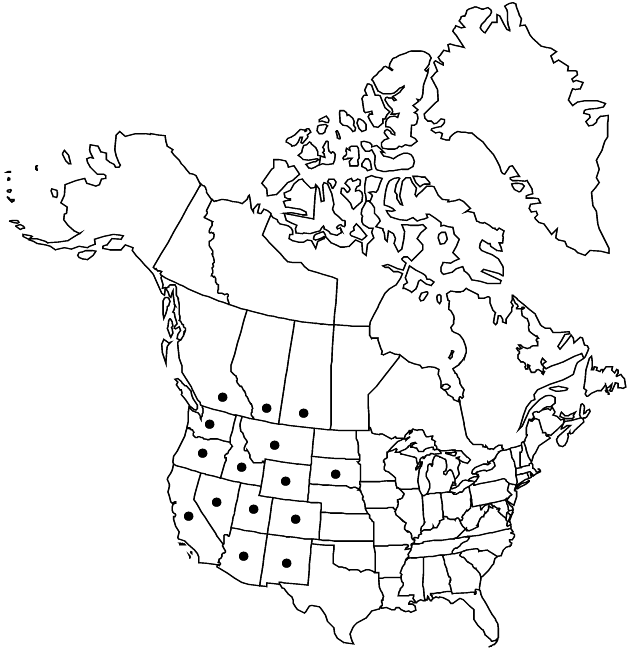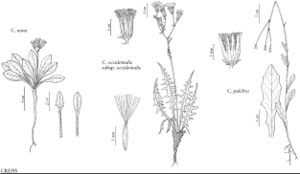familyAsteraceae
genusCrepis
speciesCrepis occidentalis
subspeciesCrepis occidentalis subsp. occidentalis
Difference between revisions of "Crepis occidentalis subsp. occidentalis"
Common names: Largeflower hawksbeard
IllustratedEndemic
FNA>Volume Importer |
imported>Volume Importer |
||
| (6 intermediate revisions by 2 users not shown) | |||
| Line 1: | Line 1: | ||
{{Treatment/ID | {{Treatment/ID | ||
|accepted_name=Crepis occidentalis subsp. occidentalis | |accepted_name=Crepis occidentalis subsp. occidentalis | ||
| − | |accepted_authority= | + | |accepted_authority= |
|publications= | |publications= | ||
|common_names=Largeflower hawksbeard | |common_names=Largeflower hawksbeard | ||
| + | |special_status={{Treatment/ID/Special_status | ||
| + | |code=F | ||
| + | |label=Illustrated | ||
| + | }}{{Treatment/ID/Special_status | ||
| + | |code=E | ||
| + | |label=Endemic | ||
| + | }} | ||
|basionyms= | |basionyms= | ||
|synonyms= | |synonyms= | ||
| Line 28: | Line 35: | ||
-->{{#Taxon: | -->{{#Taxon: | ||
name=Crepis occidentalis subsp. occidentalis | name=Crepis occidentalis subsp. occidentalis | ||
| − | + | |authority= | |
| − | |authority= | ||
|rank=subspecies | |rank=subspecies | ||
|parent rank=species | |parent rank=species | ||
| Line 42: | Line 48: | ||
|publication title= | |publication title= | ||
|publication year= | |publication year= | ||
| − | |special status= | + | |special status=Illustrated;Endemic |
| − | |source xml=https:// | + | |source xml=https://bitbucket.org/aafc-mbb/fna-data-curation/src/2e0870ddd59836b60bcf96646a41e87ea5a5943a/coarse_grained_fna_xml/V19-20-21/V19_297.xml |
|tribe=Asteraceae tribe Cichorieae | |tribe=Asteraceae tribe Cichorieae | ||
|genus=Crepis | |genus=Crepis | ||
Latest revision as of 19:50, 5 November 2020
Plants 10–40 cm. Stems stipitate-glandular. Leaves 10–20 × 2–4 cm, sharply dentate to pinnately lobed (lobes dentate; distal cauline leaves stipitate-glandular). Heads 10–30. Peduncles tomentulose, stipitate-glandular. Phyllaries 10–13, sparsely to densely stipitate-glandular (lacking dark or long black setae). Florets 18–30. Cypselae golden brown. 2n = 22, 33.
Phenology: Flowering May–Jun.
Habitat: Arid rocky hillsides, sagebrush scrub
Elevation: 1000–2200 m
Distribution

Alta., B.C., Sask., Ariz., Calif., Colo., Idaho, Mont., Nev., N.Mex., Oreg., S.Dak., Utah, Wash., Wyo.
Discussion
Selected References
None.
Lower Taxa
None.
